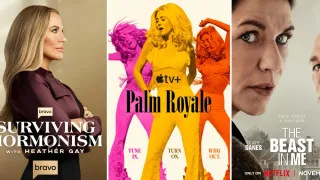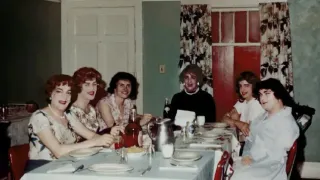November 27, 2022
Trans-Pacific Māhū Ancestors: Reclaiming Hawaiian Trans Identities/Spirits
Michael Yamashita | NewsIsOut.com READ TIME: 4 MIN.
In a world full of anger, hurt and worry, a Hawaiian legend of dual male/female identities has been resurrected to reclaim an ancient tradition and bring healing to our modern lives. Such a story is necessary today as transgender people are openly attacked as easy targets of hatred and discrimination, scapegoats for all that is wrong with "The Left" and "Wokeness." Contemporary Hawaiians are reclaiming ancient cultural understandings of gender to provide us with expansive ways of being and the freedom of possibilities beyond the narrow gender binary of Western civilization.
On the island of O'ahu, a short walk from the historic gay bar Hula's Bar & Lei Stand and touristy gay Kuhio Beach Park, a locus of healing and pilgrimage has been re-remembered on Waikīkī Beach through a reclaimed legend of transgender healing spirits. A formation of four stone boulders has been hiding in plain sight for most of the 20th century, now located between the Duke Kahanamoku statue and a police substation, oblivious to the many locals and tourists as they pass by along the world-famous beach, although they have long been considered sacred by Native Hawaiians. Their transgender history, meaning and importance had been purposefully erased in the last century through a process of American colonialism, imported Christian attitudes, and the increasing commercialization of Waikīkī.
The transgender identities of these sacred healing stones have been restored in a retelling of their legend in the award-winning, short animated film "Kapaemāhū," a collaboration between Native Hawaiian educator, cultural practitioner, and transgender activist Hinaleimoana Wong-Kalu, Emmy and GLAAD award-winning filmmaker activists and married couple Dean Hamer and Joe Wilson and Oscar-nominated animator Daniel Sousa. Notably, the film, released in 2020, is narrated by Wong-Kalu in the Ni'ihau dialect of Hawaiian, and a bilingual, illustrated children's book version was published in June 2022.
In about 1500 CE, four extraordinary individuals with a mixture of male and female spirit, or māhū, sailed from Tahiti to Hawai'i to share their gifts of knowledge and healing cures to the ailing people of Waikīkī. According to a written account about the māhū healers in the early 20th century to preserve the history of the stones: "Their ways and great physique were overshadowed by their low, soft speech, and they became as one with those they came in contact with. They were unsexed, by nature, and their habits coincided with their womanly seeming, although manly in stature and general bearing." In gratitude to these mysterious beings named Kapaemāhū, Kinohi, Kahaloa and Kapuni, a monument of four boulders was erected on the beach in their honor, which the māhū imbued with healing powers before disappearing.
Over time, Western foreigners arrived on the islands and the once-sacred stones were forgotten until the 1960s. Even then, the transgender identity of the stones was consciously obscured or omitted. Although the true story of these stones was not fully recovered until attempted by the filmmakers of "Kapaemāhū," the power of the māhū healers still calls out to those who pass by them on Waikīkī Beach today.
Wong-Kalu, 50, said māhū was a common, derogatory slur directed at LGBTQ+ people when she was growing up in Hawai'i. She remembers being among the beachgoers who would sit on the stones and drape towels over them after swimming, unconscious of their significance. Wong-Kalu added that there are physical, emotional, mental and spiritual elements to being māhū. "In Hawai'i, one could really exist in the middle," she said. "Such stories are rarely told, and when they are, it's usually by outsiders who impose their lens of the world, their language and culture to synthesize and process the narrative through their own experience. I wanted to tell the story from my perspective as a native māhū wahine [woman] and tell it in the language that my ancestors might have used to pass it on." She wanted to show children in Hawai'i that "proper Hawaiian culture" doesn't pass judgment against those "who have elements of duality. ... They were respected and honored because people knew that their male and female duality made them even more powerful a healer."
An exhibition, "The Healer Stones of Kapaemāhū," was mounted in the summer by the Bernice Pauahi Bishop Museum, Hawai'i's premier natural and cultural history museum, to cultivate a deeper understanding of gender diversity, Native Hawaiian health and the power of monuments. Historian, Native Hawaiian and lead curator Desoto Brown, 60, said that people of dual identities were accepted in traditional Hawaiian culture and valued for their unique talents and contributions. "People who were sexually different, who identify differently, who looked different were not objects of scorn. They weren't pushed aside. They weren't hated. They were accepted as part of the normal array of different types of human beings. And that's true for the four healers," he said. "With the introduction of Christianity, with the introduction of Western morality and Western perceptions starting in the late 1700s, people like the Kapaemāhū healers, people who are different, became not accepted, but disliked. Actively hated. Suppressed."
Brown hopes people will come to understand that being māhū is a powerful cultural identity that can inform and undermine Western prejudice and discrimination. "There are people that are māhū, and there always have been, and there always will be," he said. "Yeah, there are these people – don't hate them, don't destroy them, just respect them as part of everything that we are as humans."
LGBTQ+ residents and visitors to Hawai'i now have an ancient point of reference in Waikīkī, and a powerful reminder that queer people occupy a unique historical and spiritual dimension by dint of their existence. The stone monument is physical evidence of the deep roots of gender fluidity in Polynesia. By reclaiming the true history of Kapaemāhū, the spiritual power of ancient Hawai'i is transmitted across time to bring healing to our modern world. Tatiana Kalaniopua Young, 40, a Native Hawaiian anthropologist, māhū, and a director of the Hawai'i LGBT Legacy Foundation, said the story of the stones and healers helped her family understand that she was not "this weird creature that's outside of the norm." And that in a Hawaiian sense, she was part of the norm. She said, "It gave me a sense of place and purpose as a māhū and it really made me proud to be Kanaka Maoli, or Native Hawaiian."
The State of California offers help for victims or witnesses to a hate crime or hate incident. This resource is supported in whole or in part by funding provided by the State of California, administered by the California State Library in partnership with the California Department of Social Services and the California Commission on Asian and Pacific Islander American Affairs as part of the Stop the Hate program. To report a hate incident or hate crime and get support, go to CA vs Hate.
Michael Yamashita is the publisher of the Bay Area Reporter and a founding member of News Is Out, a pioneering national collaborative of queer media outlets. The collaborative includes 6 of the leading local and queer-owned LGBTQ+ publishers across the nation.
Join the weekly News Is Out newsletter here.






